Designing a kitchen – 15 expert tips on how to plan and design a kitchen
Find out about designing a kitchen like a professional with our step by step guide


Designing a kitchen is something of an ever-evolving learning process, simply because how we use our kitchens is changing constantly. Where once, one member of the household confined themselves to cook, kitchens are now family spaces used for cooking, obviously, but entertaining, dining, work, and even lounging.
So, planning a kitchen in great detail from the outset is a must – and we have asked top kitchen designers for their help in defining the process. Below we take you through the design process step by step so that you can take all your creative kitchen ideas and marry them with practicalities to create a perfectly balanced room using inspiration from the best kitchen designers in the world.
Designing a kitchen – the basic elements of kitchen design
Designing a kitchen is best done by experienced professionals – but only hand-in-hand with you. That is because how you use your kitchen will affect the design choices you will make deeply.
Our step-by-step will help you discover how to design a kitchen like a professional would – but you should always question whether each step suits exactly what you want from the finished room in terms of layout and practicality. That way, you can marry your final list with all the pictures of kitchens and kitchen styling ideas you have gathered to create the perfect space.
1. Create a wishlist
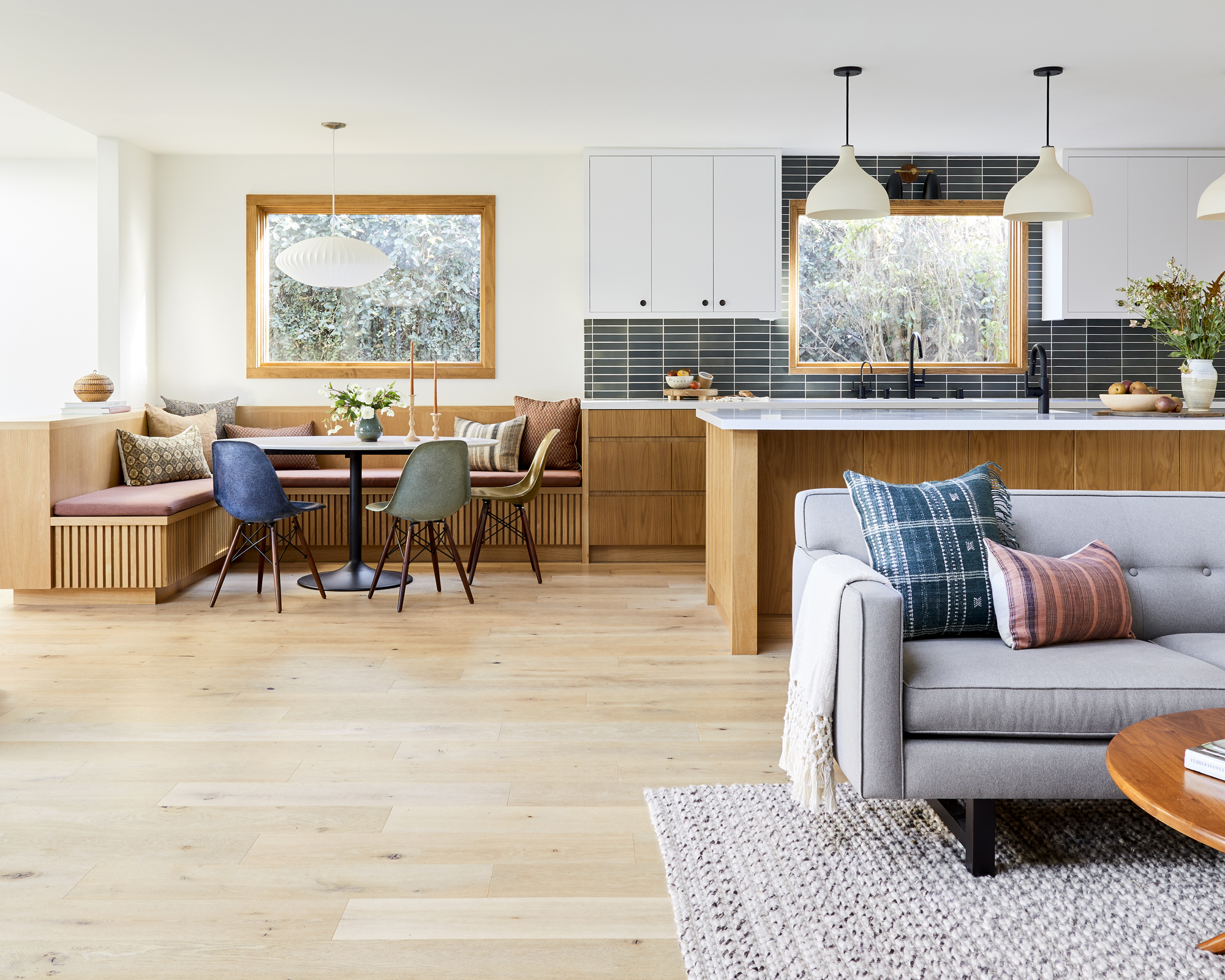
'Start by mind mapping and scribbling down all the features of your dream kitchen,' says Andy Briggs, resident interior designer and head creative for Optiplan Kitchens.
'This is the place for blue sky thinking. Which design style have you been eager to embrace? What appliances or luxury gadgets do you crave? Write down everything you’ve always longed for. You should also reflect on what isn’t working for you in your current set-up.'
You can include more intangible ideas on this list that your designer can help with – mixed materials cabinetry, different countertop finishes, and so on.
Design expertise in your inbox – from inspiring decorating ideas and beautiful celebrity homes to practical gardening advice and shopping round-ups.
'Fine-tune your wishlist by perusing sites and social platforms such as Pinterest and Instagram for interior design inspiration. Magazines and brochures are useful resources too, furnishing you with the latest kitchen trends. The more you see, the more you’ll begin to get a feel for the style of kitchen you prefer, whether it’s country classic or modern minimalism,' continues Andy Briggs.
2. Set a kitchen design budget
Kitchen costs need to be clearly defined at the start of your project.
'How far you can go with your wishlist will then depend on your budget,' says Andy Briggs. 'You need to establish how much you can realistically spend on the project. Alongside the kitchen itself, be sure to include allowances for plumbing, wiring, lighting, appliances, flooring, decorating, labor and any finishing design touches. You should also add a further 10% as a contingency for any unforeseen costs.'
3. Consider how you will use your space

Designing a kitchen isn't just about working out a kitchen layout that fits the space – kitchen planning needs to run around how you use the room, too.
'First, think carefully about how you wish to use the space and your requirements,' advises Damian Wright, senior designer at Smallbone.
'Today’s kitchens are the central hub of the house, so we approach the design by thinking of the layout in terms of moments, with places to cook, to eat, to entertain and sometimes a spot to sit and work.
'However, even in a large room, try to keep the prep, cook and wash areas close together to be as efficient as possible.'
4. Measure up
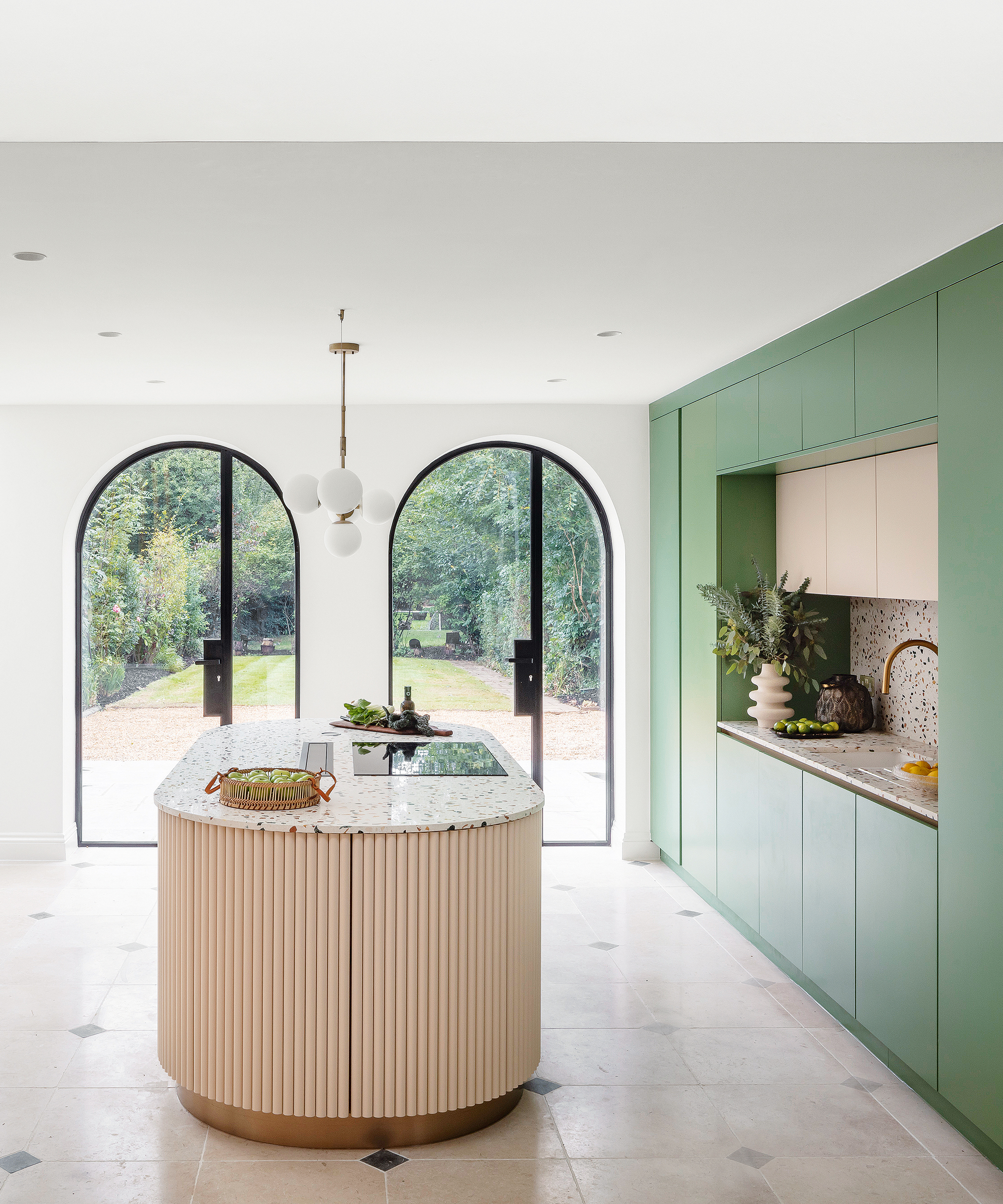
With the kitchen coming under increasing pressure to perform a variety of crucial roles such as family dining, relaxing, working and entertaining, a good kitchen layout and adequate storage are more important than ever in planning a kitchen, but ensuring you can fit in everything you want depends on accurate measuring – something you will need to do before you visit a design professional, though if they come to you, you can hand this responsibility over to them.
'When planning your kitchen be careful not to be over ambitious with freestanding elements,' says Ben Burbidge, Burbidge Kitchen Makers' Managing Director.
'Ensure you precisely measure your floor so that an island will fit comfortably within your space. When placed in the center it should leave enough floor space for you to maneuver around and access the rest of the kitchen.
'The area under the kitchen island’s countertop is also essential as it offers ample space for storage and kitchen essentials such as low fridges and deep drawers.'
5. Consider the perfect layout

Aesthetic choices aside, kitchen layout ideas are where you should start the practical journey of designing a kitchen.
'Effectively planning an ergonomic kitchen layout, and maximizing the space, can make time spent in the kitchen all the more enjoyable. In your layout try to configure your sink, refrigerator, hob and oven within easy reach of each other and then consider what storage to put in this area.
'Cabinets and pull out drawers near the oven are usually best suited for cooking oils, pot and pans, while space near the sink is best used for dishes,' says Ben Burbidge of Burbidge Kitchen Makers.
Consider natural light and thoroughfares in your layout planning – seating areas are best place near windows, while the main cooking zone shouldn't also be the main thoroughfare between the hallway and the garden through the kitchen, for example.
6. Make the right cabinetry choice

Looking for kitchen cabinet ideas is the fun part of planning a kitchen.
'The starting point is to consider how you want your kitchen to look and feel. Think about how it might relate not just to the living and dining areas, especially if it is part of an open plan space, but how it also fits with your overall plan for the house,' says interior designer Tiffany Duggan of Studio Duggan.
'Gather images of kitchens that inspire you and start to hone your ideas, thinking about how they might suit your space, the joinery elsewhere in the house, and the period of your property.'
If you love traditional kitchen ideas, think about the detailing on cabinetry.
'Painted kitchens work particularly well for their timeless appeal and because they are so useful to repaint every now and then to create a different look and feel. I’ve seen 20-year-old classic Shaker kitchens be repainted and look amazing,' continues Tiffany.
Modern kitchen ideas are a trickier fit.
'With a contemporary flush (flat-fronted) kitchen, think about whether you see yourself liking it in the future. Given the level of investment, cabinetry is probably the one thing you don’t want to change, but you can always repaint the walls and replace the backsplash in the future if you wish,' advises Tiffany.
7. Consider cabinetry proportion, scale and symmetry

Designing a kitchen is a fine balance of practicality and aesthetics – with the impact of the bulk of the cabinetry an important element to consider. Alongside the style of cabinetry, do consider its proportions and aim to create some sense of symmetry by placing key features, such as a chimney breast framing a range cooker, as a central piece. The specifics are going to be determined by the size and height of your room.
A ‘standard’ kitchen cabinet is usually 600mm wide (although there are plenty of other options and of course bespoke allows for anything you want); we often start by plotting the room in terms of 600mm-wide sections simply to get some sense of scale.
'It's best to run tall units up to the ceiling or just below, if they have coving,' says Tiffany Duggan. 'Stumpy units with a meter of empty space above in a high-ceilinged room look unbalanced and it is usually better to fill the empty space with more cupboards, which can be used for storing infrequently-used items such as vases and terrines.'
8. Think: kitchen colors

When our studio first opened in 2011, kitchens all seemed to be neutral in color, whether they were classic or contemporary,' says Tiffany Duggan. 'Now, in line with current trends throughout the house, we are seeing more demand for kitchen color ideas, colorful kitchens with pattern and personality, which is probably another reason why the Shaker style is so popular.
'It can be customized easily: the interiors of a glass-fronted cabinet can be painted in one color, the door frames in another, or the handles changed as you wish. For individuality, I also recommend adding an antique china cupboard or sideboard to the room, preventing the fitted cabinetry from looking too "samey".'
'As the kitchen tends to be the busy and bustling heart to the home, rather than a serene space, bright, warm, eye-catching wall colors can work perfectly,' says Helen Shaw, Benjamin Moore UK, director.
'Alternatively, smaller pops of brighter shades also add depth and personality to a neutral kitchen space. Using paint to add a splash of color to a cabinet front, bar stool or shelving unit is not only cost-effective but also allows for a unique burst of personality to be injected with ease.'
Kitchens are rife with color opportunities, from appliances and flooring, to window treatments and cabinets. Start by deciding how much of a permanent commitment you are willing to make. One of the easiest and least expensive options is to paint a wall that can be easily updated should you tire of it.
9. Factor in appliances

While ‘standard’ built-in ovens, refrigerators and dishwashers are 60cm wide, there are also wider appliances which may need to be factored into designing a kitchen, such as 76cm-wide ovens, 90cm-wide fridge-freezers (wider, if you plan to create a cooling wall with side-by-side refrigerator, freezer and wine cabinet) and range cookers at up to 1.5m wide.
You may also want to consider a warming drawer that can be used to slow cook, a steam oven, combination microwave, vacuum drawer to prepare food for sous vide cooking, fridge drawers in place of or in addition to an upright fridge, dishwasher drawers, a wine cooler and a series of 40cm-wide barbecue grill, teppan yaki, gas and induction domino hobs in place of a ‘standard’ 60 or 90cm-wide hob.
Technology in extractor systems has also advanced considerably, so you can choose between wall and ceiling-hung hoods, discreet flush-fit ceiling designs, hoods concealed in cabinetry or in a chimney breast, downdraft extractors built behind a hob, and hobs with integrated extractors.
For more guidance, see our guide on, where should a refrigerator be placed?
10. Include a boiling water tap
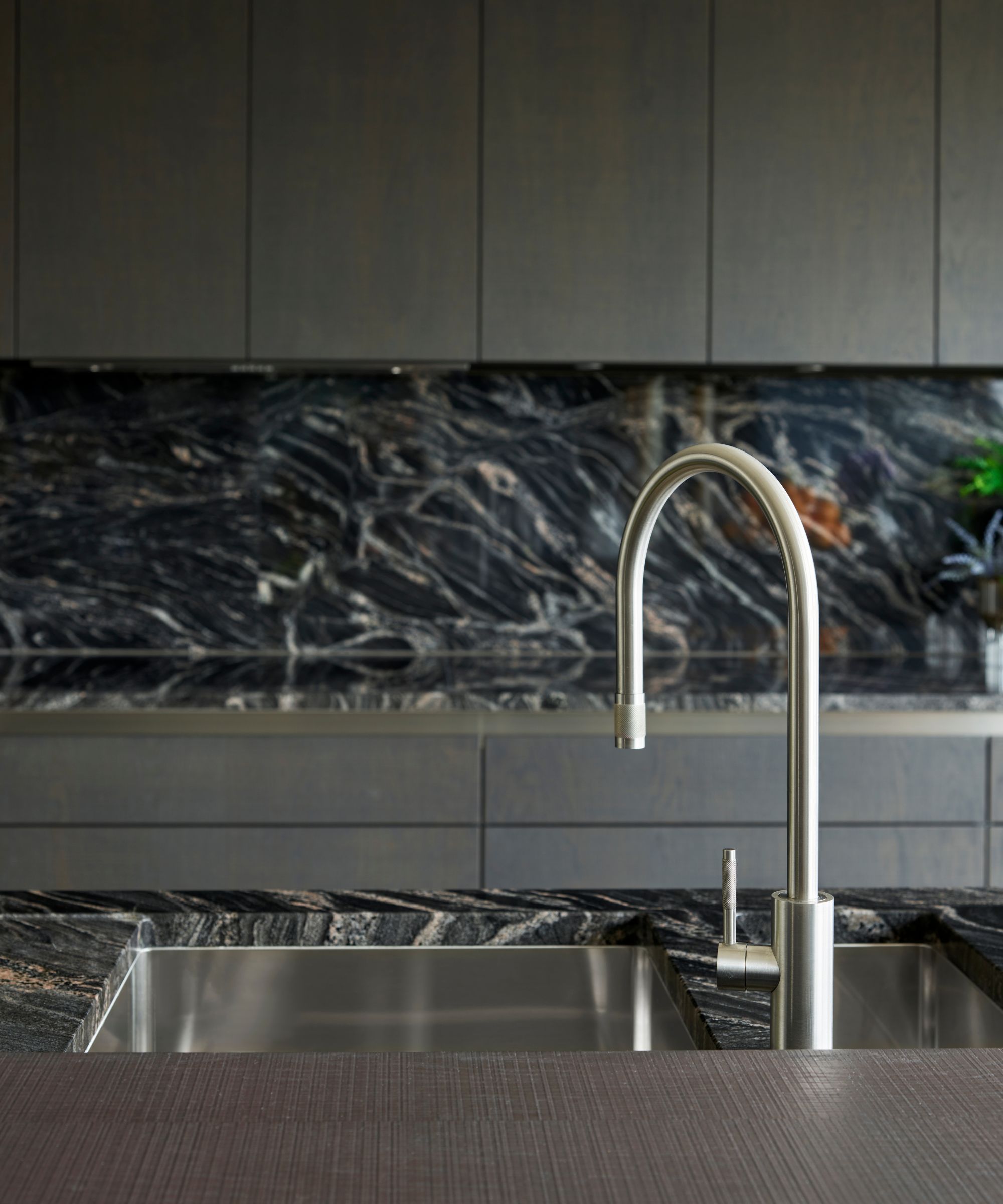
All-in-one boiling water taps are now often replacing the standard mixer. Tanks vary in size, but the popular Quooker PRO3 model requires 480mm height and is 150mm diameter, which needs to fit under the sink.
11. Measure out sufficient countertop space
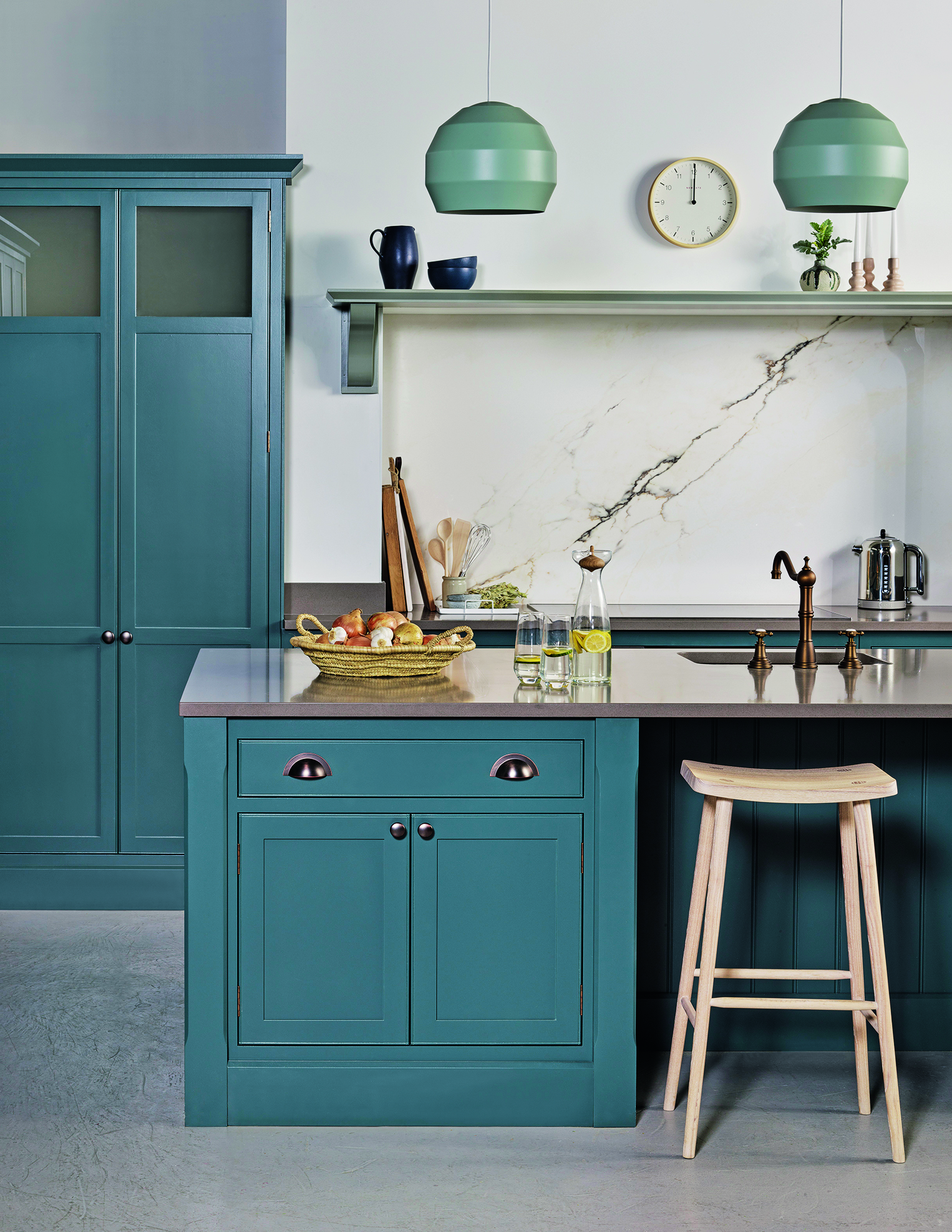
The amount of countertop space depends on individual requirements, but when you are designing a kitchen it is always important to have countertop space of at least 600mm either side of the sink and hob to wash and prepare food. It is also essential to include a space close to the oven for hot dishes.
Melissa Klink, head of design at Harvey Jones, suggests how to select a surface that balances beauty with practicality. 'While every aspect of a kitchen design is important, the choice of countertop material is particularly so, since it has such a big visual impact. You also want to consider the different characteristics of each type of material to make the best choice for your lifestyle.
'There are no longer any rules: go with what connects with you personally. It is worth saying, however, that balance in your design is important. Some of the heavily veined marble effect materials are awesome, but they are also strong, so avoid too many competing bold looks. As an example, if you choose an intense Verde Green granite for the island surface, it may be best to pair it with a more understated material for the other countertops.'
When looking for kitchen countertop ideas, the choice of material is key. Melissa has this advice:
'Quartz – containing quartz mixed with pigments and polymers, quartz surfaces are more durable than most natural stone, and impervious to stains and scratches, resistant to heat and easy to maintain.
'One of the advantages of quartz is that there are many great marble effects on offer. Quartz is also consistent in appearance: what you see in the sample is pretty much what you are going to get in your home, which is particularly useful if you have a large kitchen and want a uniform surface. It is also worth noting that some of the newer ranges are made using a significant amount of recycled material
'Real marble is porous and will stain, so we do not recommend it for countertop use.
'Porcelain is another manmade option, a ceramic material fired at extremely high temperatures to create a durable, non-porous surface with a high resistance to heat and stains. It is also available in book-matched and vein-matched looks for extra impact, and in thinner formats, from 12mm, as opposed to quartz which is 20/30mm thick.
'Granite – as a natural material, each slab of granite will be unique, ideal if you want an individual look with a timeless sense of beauty. It is also durable and relatively low maintenance once it has been sealed by your supplier.
'Solid surface – made from acrylic resin and minerals, solid surface, such as Corian, is non-porous, durable, smooth and warm to the touch. It also offers plenty of design freedom as it can be moulded into organically curved shapes with a seamless finish, in contrast to quartz, granite and porcelain, which require joints for sizes greater than their maximum slab dimensions, such a 1200/1400x3020mm for a ‘standard’ quartz slab.
'Timber – many of our kitchens have a combination of worktop materials, often including wood. As a natural material, it will require upkeep, but its warmth, host of options in timber species and range of washed, oiled and stained effects make it ever popular.'
12. Plan in a kitchen island
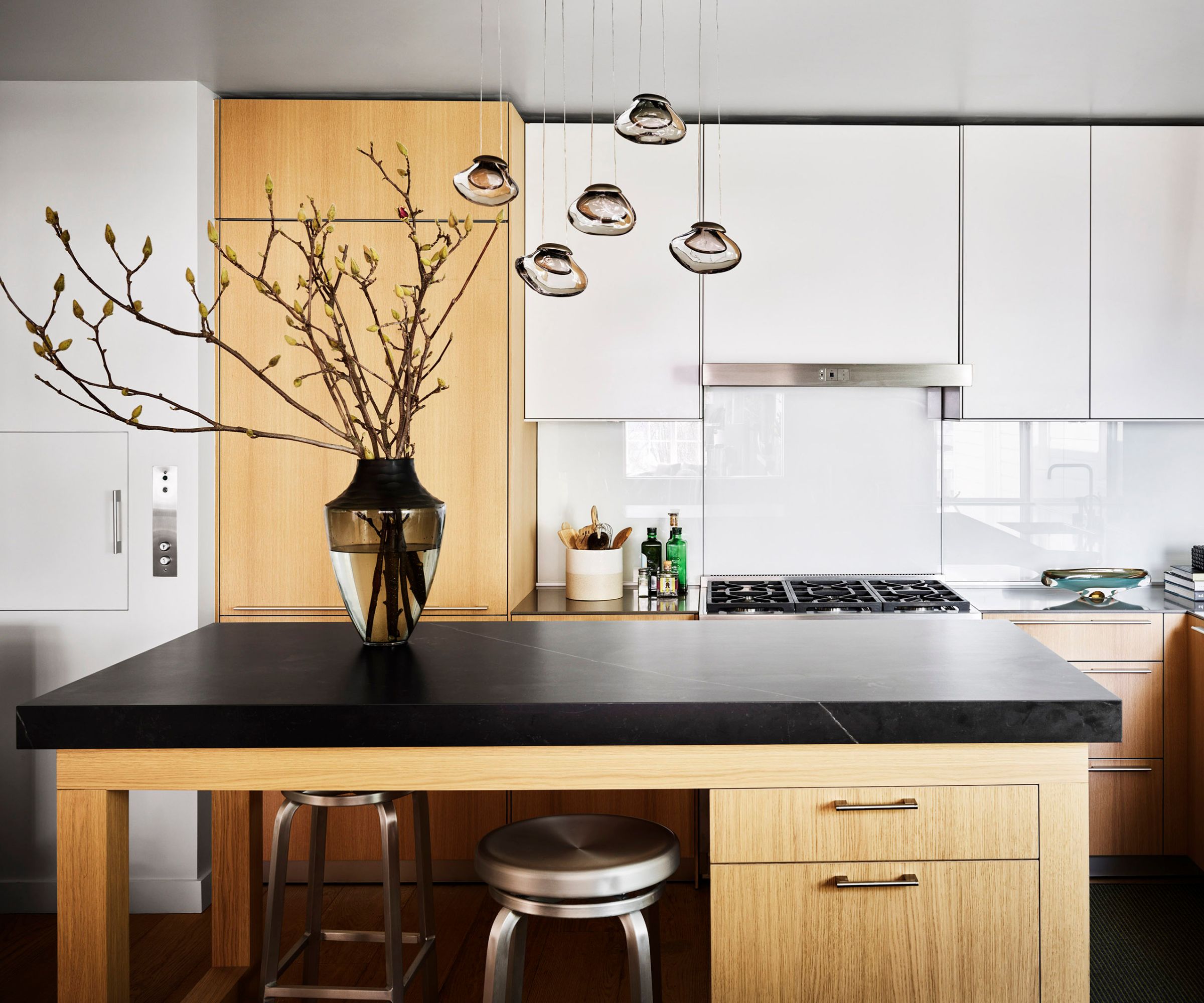
If there is enough space, kitchen island ideas can be an ideal addition to any kitchen. They have so many uses, from additional prep surface, a place for the sink, a spot for the hob, somewhere for drinks and a place to cook in front of guests.
A good size island can range from about 2m to 3m long and 1.1m to 1.4m wide (any wider tends to create wasted space in the centre). Allow at least 1m of space around the island, more if the route is to be used as a walkway, and if you have seating at the island, remember that not all bar stools tuck right in, so take this into account when measuring from the back of the island to the nearest wall or cabinet.
13. Work out what kitchen storage you need
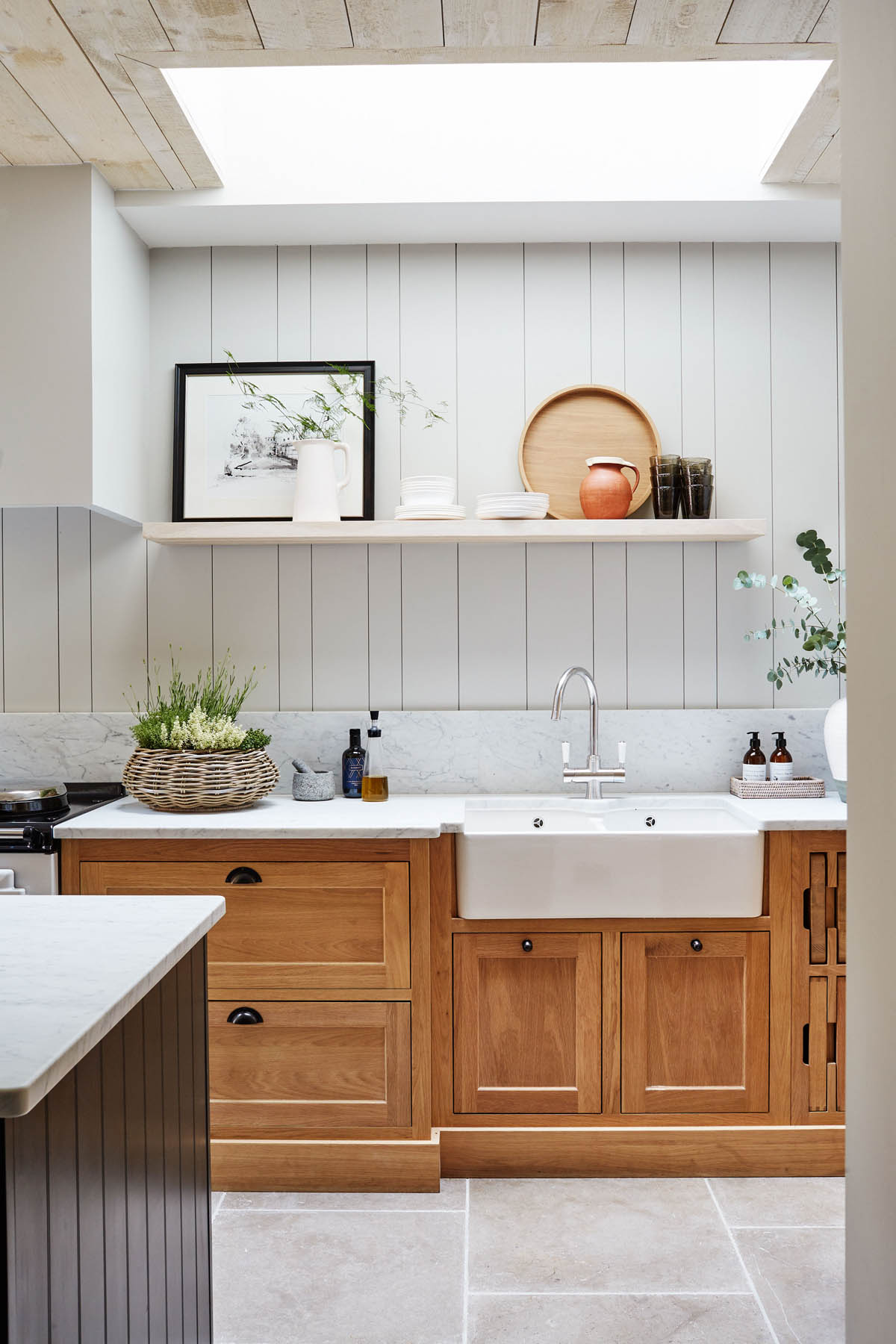
Interior designer Emma Sims-Hilditch at Sims Hilditch explains how careful planning and great kitchen storage ideas can result in a space that is as calm as it is practical.
'To enjoy your kitchen to its maximum potential, it is worth thinking, at the outset of the project, about the amount and type of storage that you need. After all, this is the place at home where you will probably spend most of your time, so being able to find what you need quickly and easily is going to make cooking more enjoyable. I really do believe that a well organised space makes you feel calmer and happier.
'Consider your space as divided into zones for specific functions, planning appropriate storage for each area and creating an easy sense of flow around the room. In larger spaces, for example, you might plan a dresser on a wall between the kitchen and dining areas, linking the two zones and providing crockery and cutlery storage close to the dining table and to a dishwasher, perhaps built into an island close by.
'A 1290mm-wide drawer will likely allow you to store all your pans in one readily accessible space, which is much easier than delving into the back of a cupboard to retrieve a heavy casserole dish.
'Pantry ideas – a pantry or larder cupboard is worth its weight in gold for storing dried and tinned goods, arranged in the way you live. For example, at home, we use the cupboard door racks for different boxes of herb teas, and the shelves for pulses, nuts and seeds in recycled glass jars. A hand-held label printer makes it easy to make simple, neat stickers for each container.
'A breakfast cupboard or coffee station is also useful, as it can be used to store all the things you need in one place, including cups, coffee machine and biscuits. Bi-fold doors make it easy to access the contents of the cupboard, while the space below could be used to include an integrated fridge drawer to store milk, ready to hand.
'Make use of every inch of space, especially in a smaller room. While base unit cupboards are typically 540mm deep, you might add shallower ones at 380mm deep to make use of space on the "non-working" side of an island, behind bar stools, for storing items used only occasionally.
'Other small kitchen storage ideas to consider include a drawer with integrated sockets for re-charging phones and tablets (no unsightly wires trailing on the worktop) and dedicated out-of-sight areas for baskets or bins to sort recycling.
'Good kitchen design is always a combination of practicality and aesthetics. I like to think about how I might make a 250mm-deep wall shelf beautiful, as well as functional, with some stacked up cookery books, in colors chosen to tie in with the curtains perhaps, and some attractive accessories.'
14. Plan in kitchen lighting
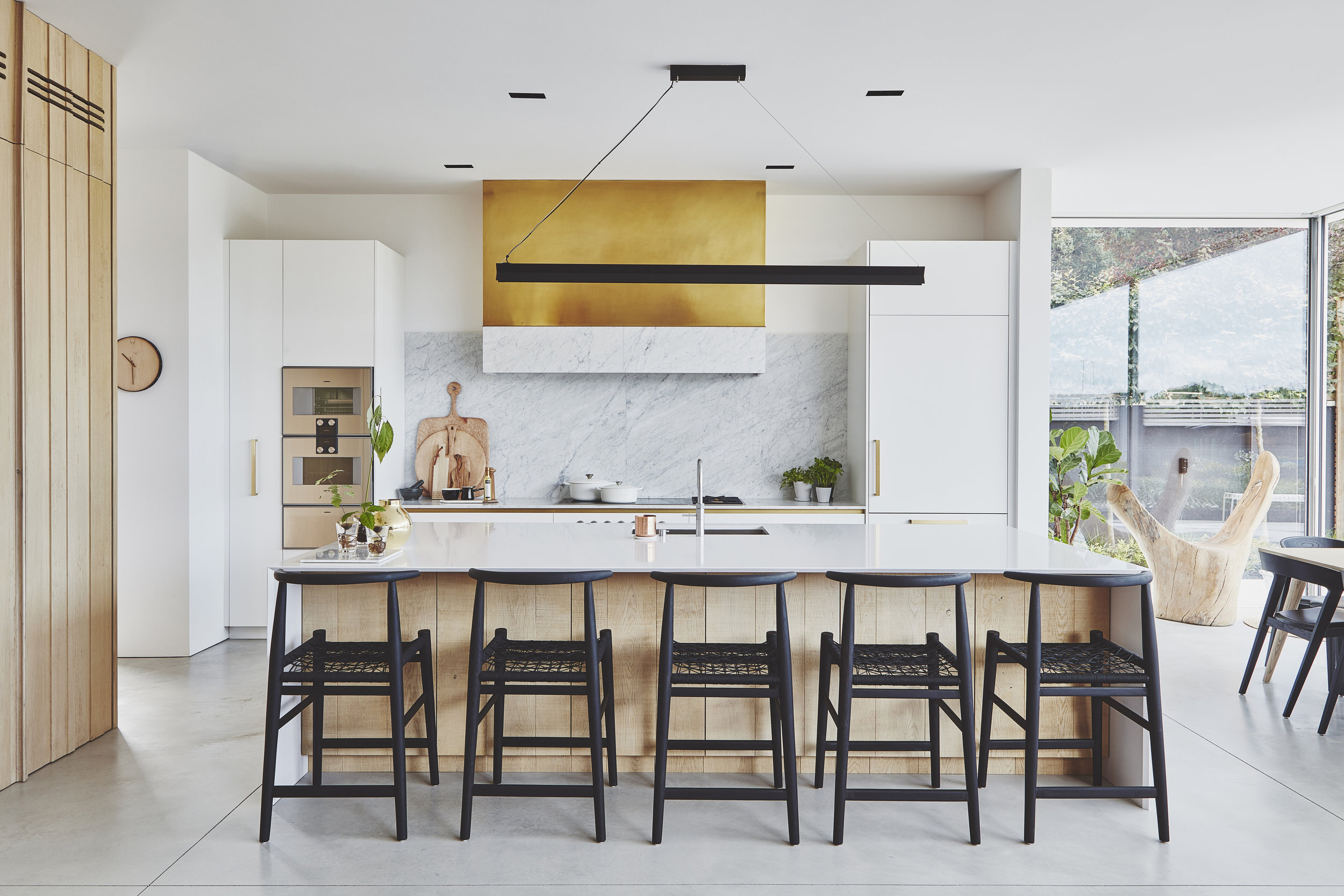
'Kitchen lighting ideas create the mood and set the scene, from low light for a dinner party through to bright light for cleaning and working. The kitchen has become a beautiful as well as practical space, and good lighting can make all the difference to the success of a design,' says Jamie Blake, creative director of Blakes London.
'As the layout develops, start thinking about the lighting, not only for wiring purposes, but also so that you can problem solve as the plans unfold. For example, I would usually use LEDs under the wall cupboards to light the worktop. Without them, another lighting solution is required, so instead I might include wall lights on swing arms that can be angled to suit.
'Dimmable ceiling downlights are a popular solution for general lighting in a kitchen. Turn them right up when you want to clean the room, dim them right down when you want a softer mood.
'While it may help to start by drawing up a grid of downlights to create an even spread of light, remember that you may need to adjust it to accommodate things like steel joists, skylights, TV screens and so on, nor do you want to put a downlight right next to a pendant or hard up against a wall cabinet. Use the grid merely as a starting point that you can modify to suit your space.
'Black track lights are also becoming increasingly popular, because they can provide plenty of light and add a little 1970s style. Use them in place of a pendant, or opt instead for a single pendant over the island, rather than a set. One large and spectacular pendant, perhaps suspended over the island to one side or over a breakfast bar, can look like a piece of art.
'Also consider practical lighting inside pantries, breakfast dressers and wall cupboards, ideally on switches that automatically turn on the light when the door is opened and off when shut. Lighting inside glazed cabinets can be used to make a feature of glassware, while a simple table lamp on a console or dresser helps link kitchen with dining or living areas in an open plan room.
'I rarely use plinth- or cornice-level lighting, because it isn’t usually necessary and can make a room look like a spaceship. There are exceptions, such as when a tall run of cabinetry stops short of the ceiling. Here, a soft glow of light could be used to illuminate a dark patch to create a balanced look.
'If you can, use a smart control system to pre-set your choice of lighting scenes. It makes life much easier than fiddling with multiple switches.'
'A versatile lighting scheme is a must-have for today's multi-functional kitchen. These days, a kitchen is not only a place to cook meals, but also a diner, office and even a temporary classroom,' explains Rohan Blacker, Founder, Pooky.
'Lighting the workspaces are key so opt for practical task lighting specific to each area and its use. You can complement a statement pendant shade with softer mood lighting and dimmers to create atmosphere when entertaining at dinner parties. Be creative and mix feature lights, colours and materials for a unique feature lighting look.'
Remember that considering how to plan kitchen lighting should be done well in advance, alongside the planning the layout. Experts agree that the best time to install a new lighting scheme is before you start to redecorate or during the initial stages of a new kitchen design; left as an afterthought and lighting possibilities are limited, impact is lessened and mistakes can be costly and disruptive to put right.
15. Choose kitchen flooring

Kitchen flooring ideas are another element of designing a kitchen that needs to be considered at planning stage.
Jules Archard, showrooms manager of Domus advises on selecting the best material for your project.
'While a kitchen floor needs to be durable and preferably easy to maintain, it can also be a feature that enhances the style and success of your room. The choice of material depends on your budget and attitude towards character, beauty and practicality.'
Whether you love the look of kitchen tile ideas or real wood, these are the practicalities according to Jules.
'Porcelain tiles are by far and away the most popular material these days, because they are robust, non-porous, highly stain and scratch resistant and work well with underfloor heating, and because they come in such a huge variety of designs, colours and formats. Stone-, wood-, concrete- and terrazzo-effect porcelain tiles score highly; it’s crazy how faithful some of the reproductions are!
'Stone-look tiles – we are seeing a move towards kitchen floors that create a very relaxed feel with a reassuring warmth, and soft, matt limestone-effect porcelain tiles, fit the bill well. This finish is also easier to keep clean than polished or very textured tiles. Consider large format tiles, such as 1.2 x 2.4m, if you want to create a sense of scale and drama, even with a neutral tile.
'Wood-look tiles – timber-effect plank-shaped porcelain tiles are also popular, not least because they introduce a sense of character and movement. Previously, their totally flat printed surface used to give away the fact that the planks were not made of real wood, but now, a woodgrain is pressed into the surface of the tile before it is printed, so their texture is realistic too.
'Encaustic look tiles – if you want the soft powdery colors and pattern of encaustic (concrete) tiles without the maintenance requirements, consider an encaustic-look porcelain, such as Puzzle. Or create a bespoke floor by combining shapes: it is amazing how many different designs you can create with a triangular format in a range of colours.
'Real stone – if you prefer to use a real stone, such as limestone, for its natural beauty, you do need to embrace the fact it is porous and may stain and weather over time, requiring regular maintenance to keep it looking its best.
'Real wood – the same applies to wood, attractive for its unique characteristics and warmth.
'Engineered timber is usually more stable than solid wood, but both should be protected from standing water.
'Laminate (wood particle board with sealed and protected printed paper over the top) is cheaper, and also durable and stable, may be less attractive to those wanting a natural look.
'LVT (Luxury Vinyl Tiles) are also worth considering, as they are waterproof, durable, affordable, and thinner at 4mm, making it useful when build up is an issue.
'Generally, all these materials can be used with underfloor heating, but always check with your supplier before purchase.'
Ease of cleaning is a must-consider when designing a kitchen – and that's especially relevant for the flooring.
'When it comes to choosing flooring for your kitchen, in addition to style and design, there are three main things to consider: safety, durability and simplicity of cleaning,' explains David Snazel, Carpetright, Hard Flooring Buyer.
'It is likely there will be spills and splashes from food and drinks so choosing a material that is easy to clean is essential, particularly for busy households. Vinyl flooring is a great and inexpensive way to add colour, pattern and personality to kitchen without compromising on safety or quality.'

Jennifer is the Digital Editor at Homes & Gardens, bringing years of interiors experience across the US and UK. She has worked with leading publications, blending expertise in PR, marketing, social media, commercial strategy, and e-commerce. Jennifer has covered every corner of the home – curating projects from top interior designers, sourcing celebrity properties, reviewing appliances, and delivering timely news. Now, she channels her digital skills into shaping the world’s leading interiors website.